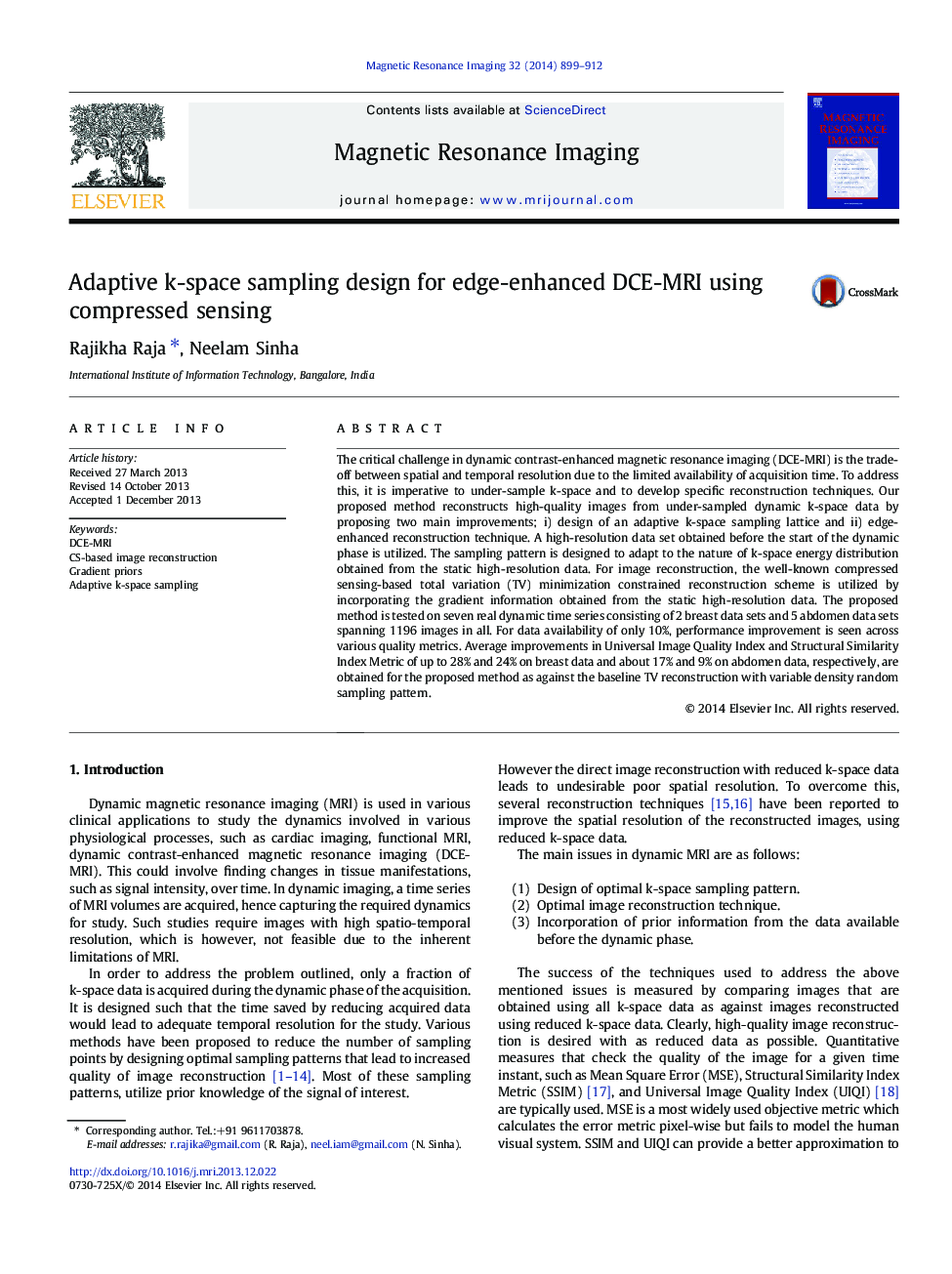| Article ID | Journal | Published Year | Pages | File Type |
|---|---|---|---|---|
| 1806422 | Magnetic Resonance Imaging | 2014 | 14 Pages |
The critical challenge in dynamic contrast-enhanced magnetic resonance imaging (DCE-MRI) is the trade-off between spatial and temporal resolution due to the limited availability of acquisition time. To address this, it is imperative to under-sample k-space and to develop specific reconstruction techniques. Our proposed method reconstructs high-quality images from under-sampled dynamic k-space data by proposing two main improvements; i) design of an adaptive k-space sampling lattice and ii) edge-enhanced reconstruction technique. A high-resolution data set obtained before the start of the dynamic phase is utilized. The sampling pattern is designed to adapt to the nature of k-space energy distribution obtained from the static high-resolution data. For image reconstruction, the well-known compressed sensing-based total variation (TV) minimization constrained reconstruction scheme is utilized by incorporating the gradient information obtained from the static high-resolution data. The proposed method is tested on seven real dynamic time series consisting of 2 breast data sets and 5 abdomen data sets spanning 1196 images in all. For data availability of only 10%, performance improvement is seen across various quality metrics. Average improvements in Universal Image Quality Index and Structural Similarity Index Metric of up to 28% and 24% on breast data and about 17% and 9% on abdomen data, respectively, are obtained for the proposed method as against the baseline TV reconstruction with variable density random sampling pattern.
